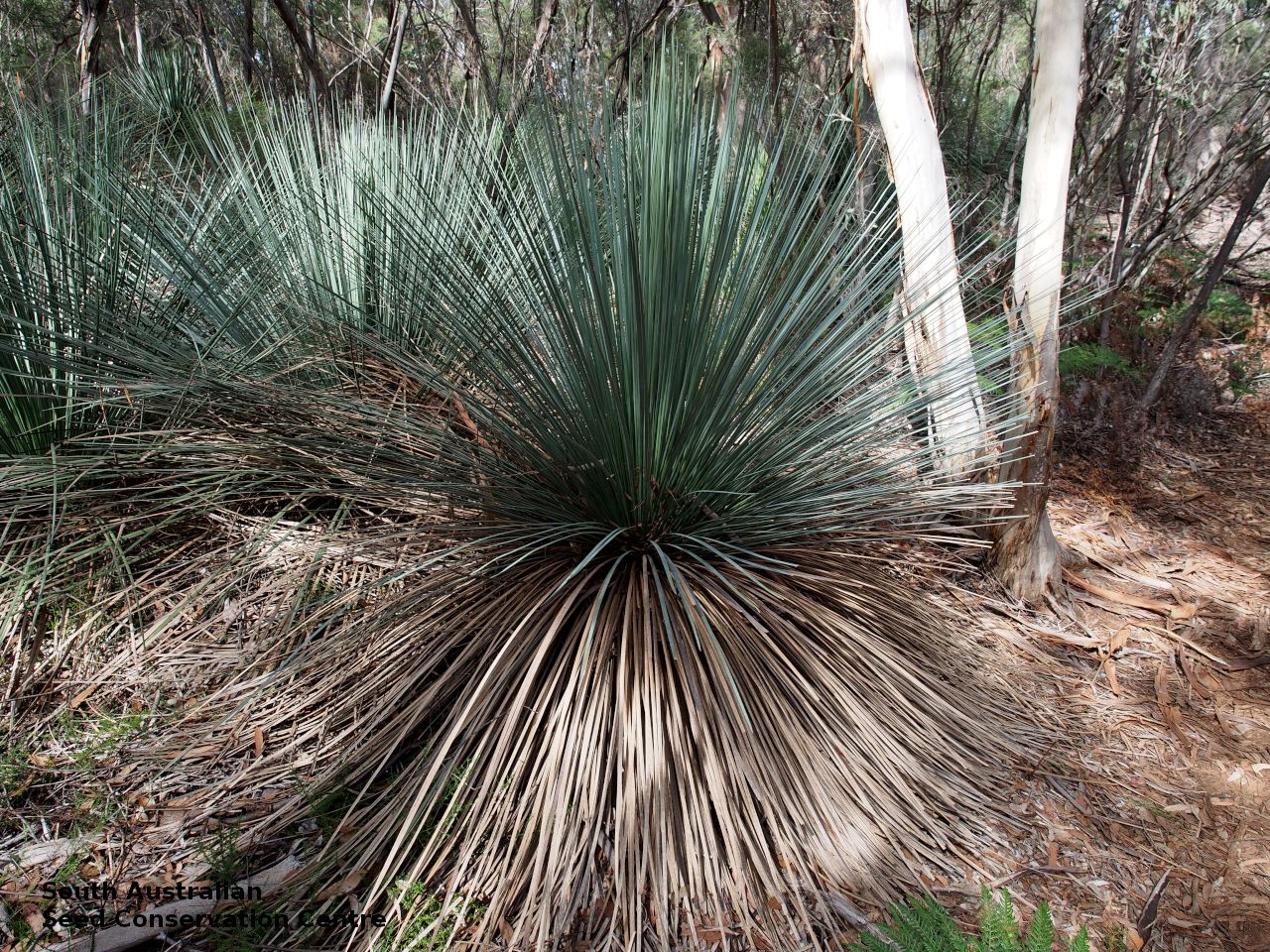
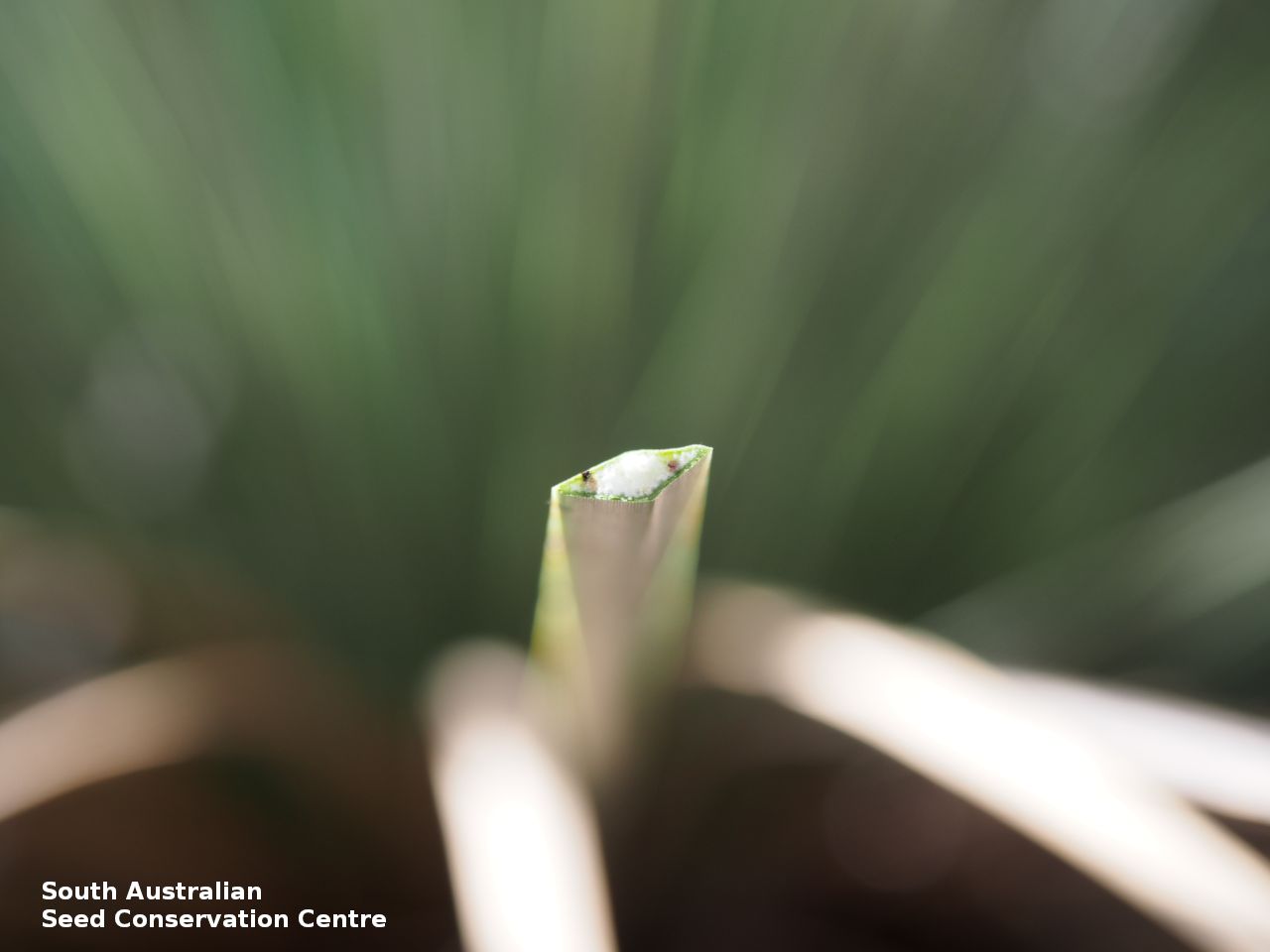
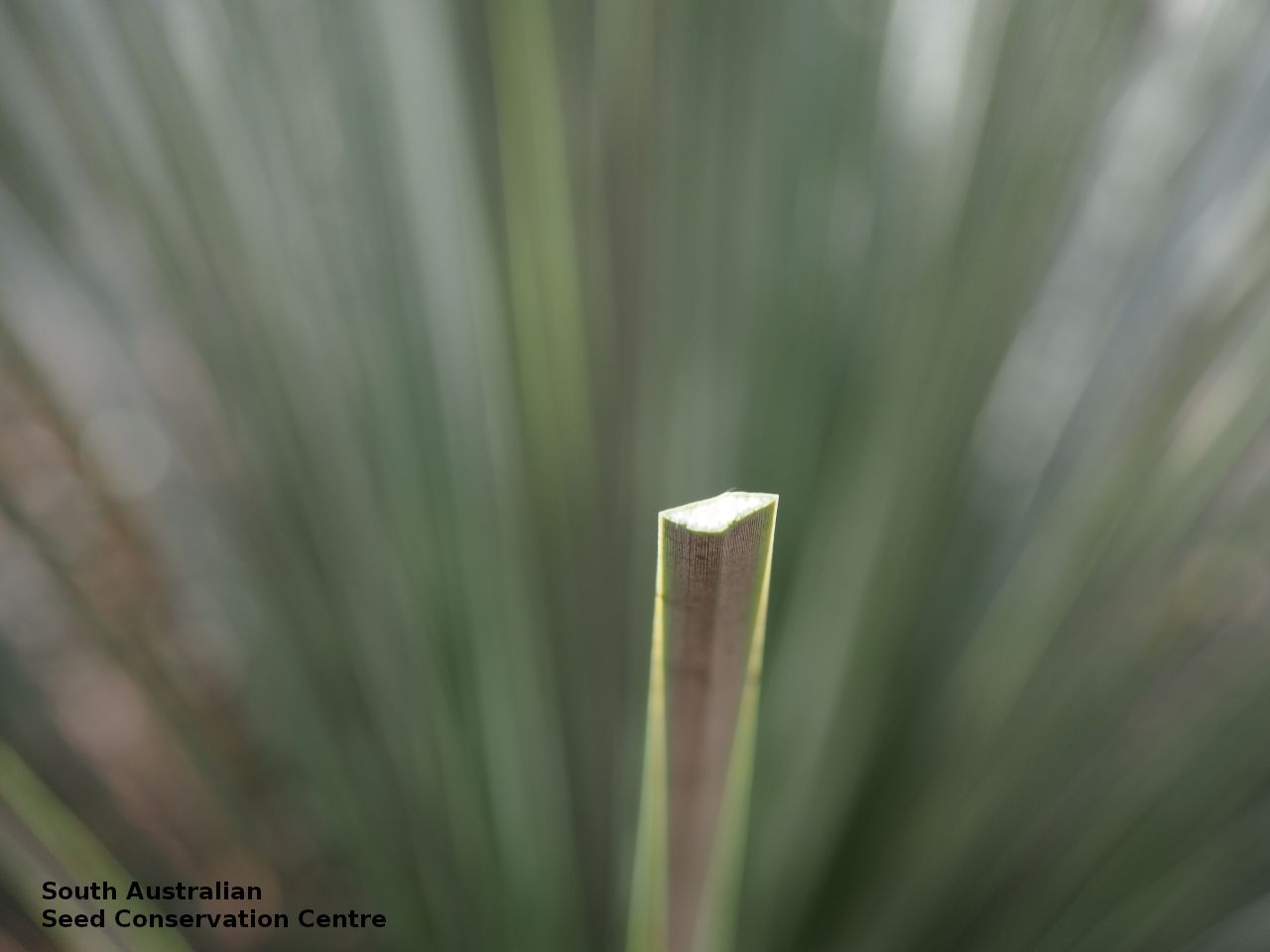
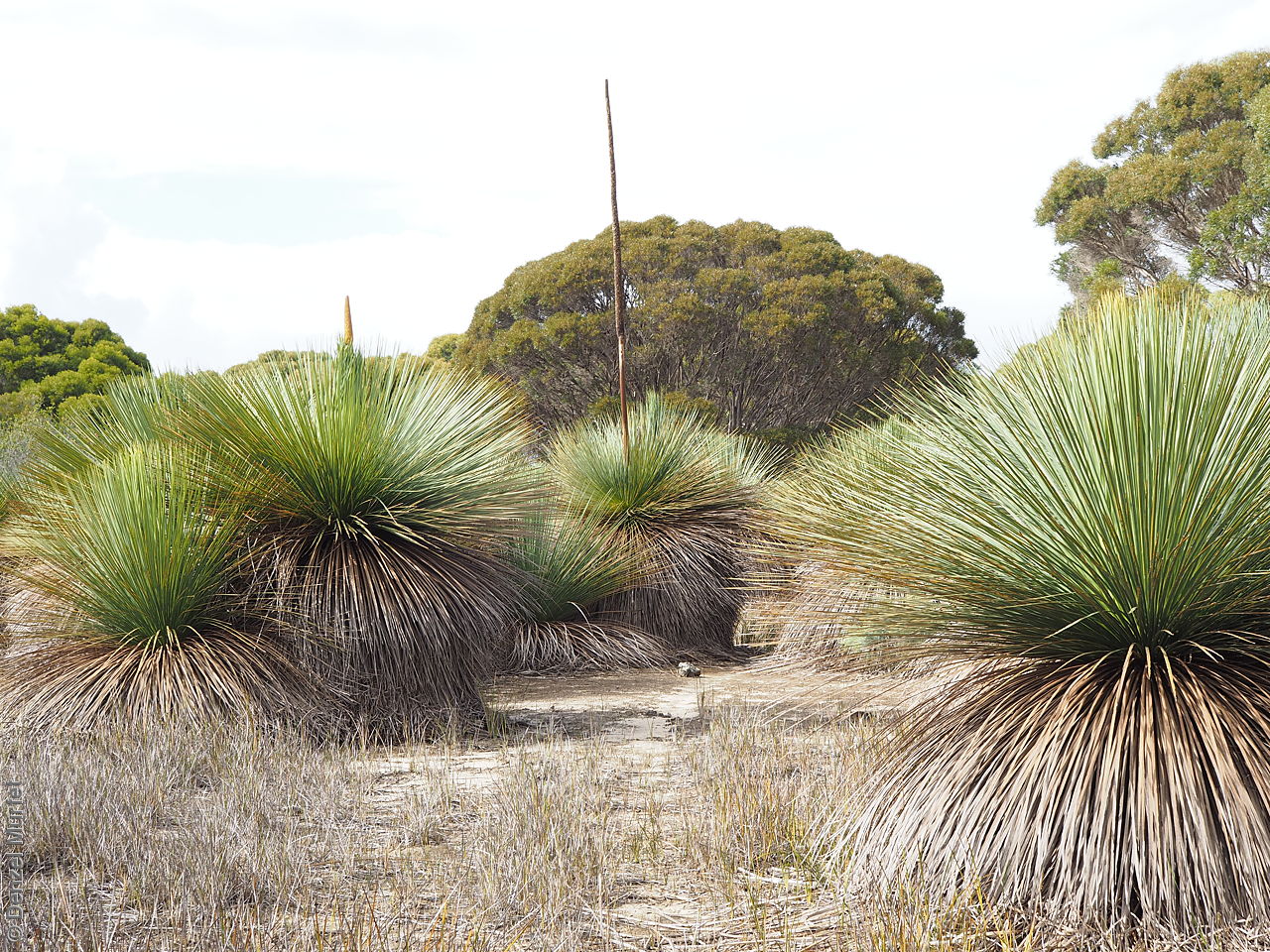
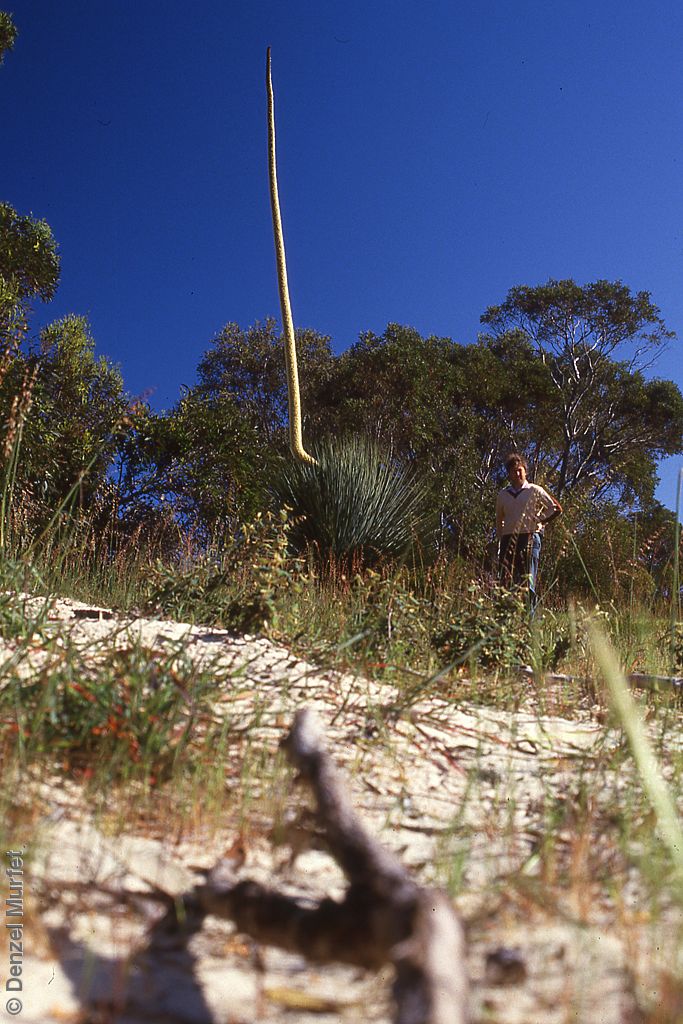
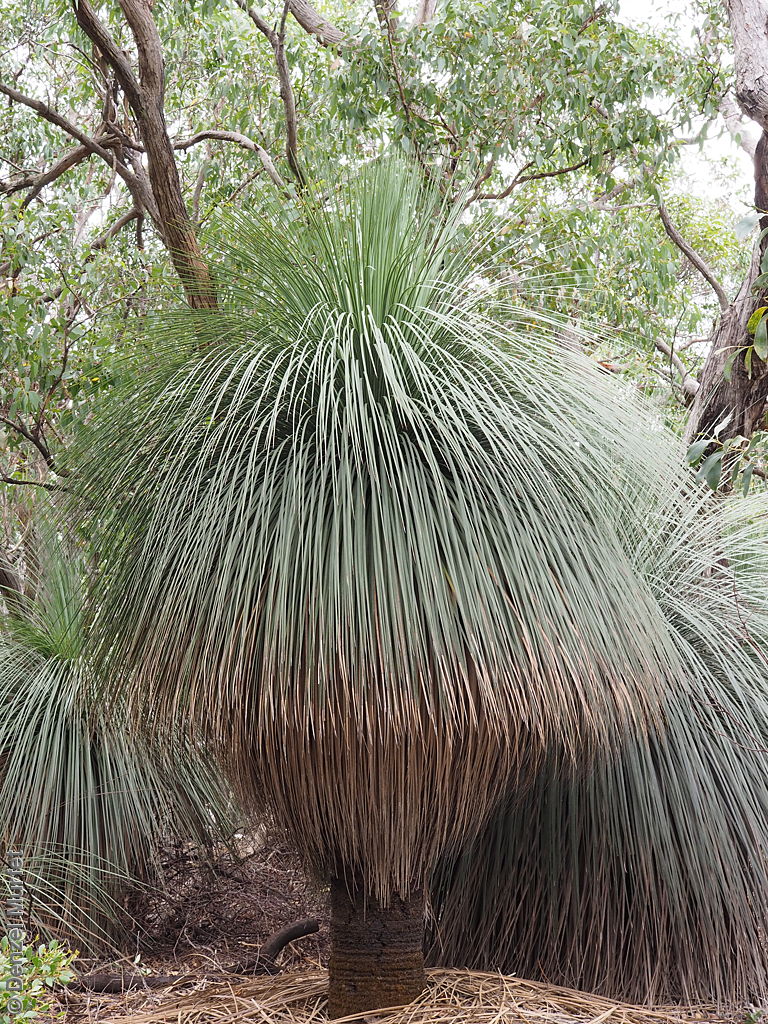
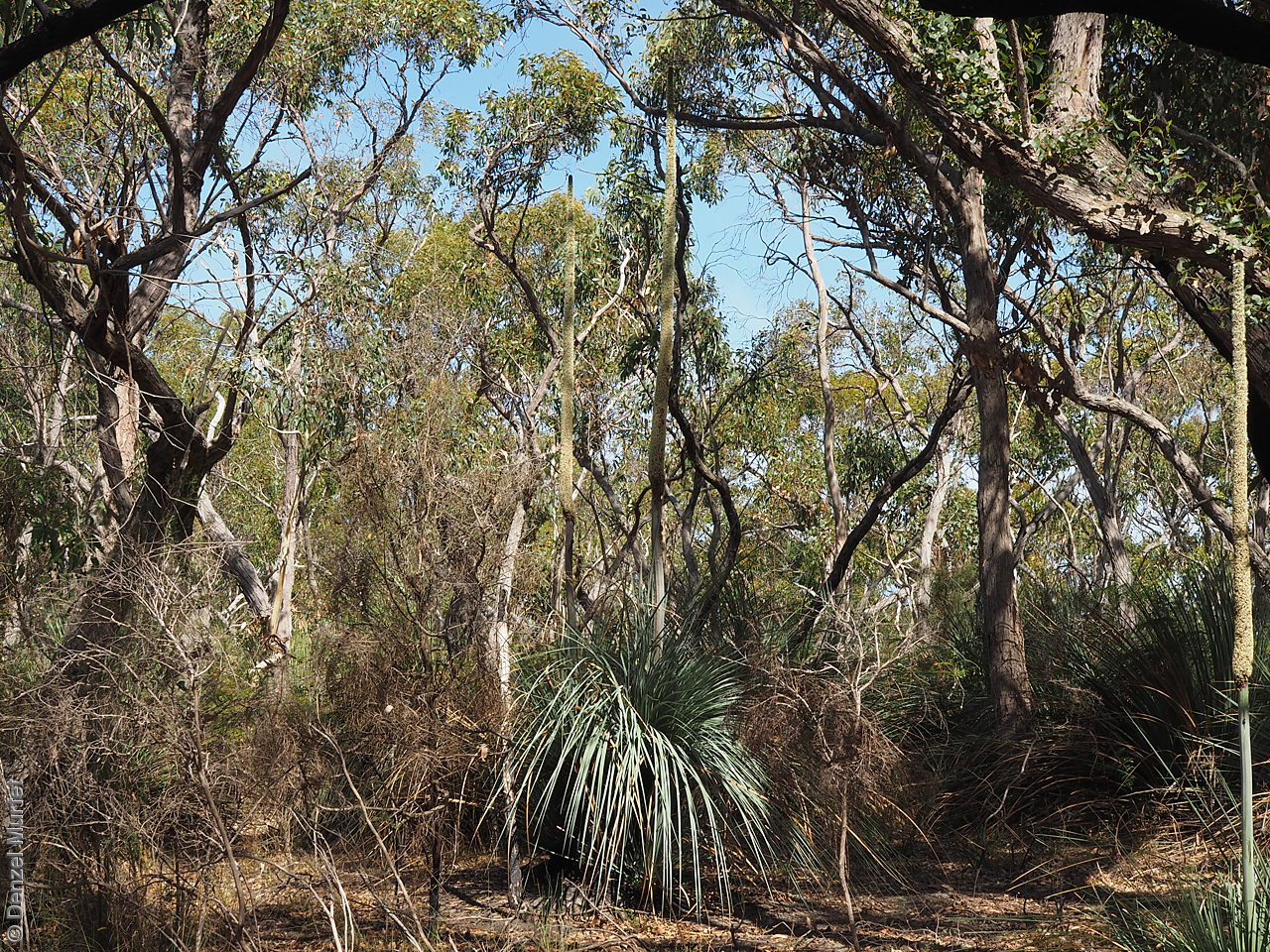
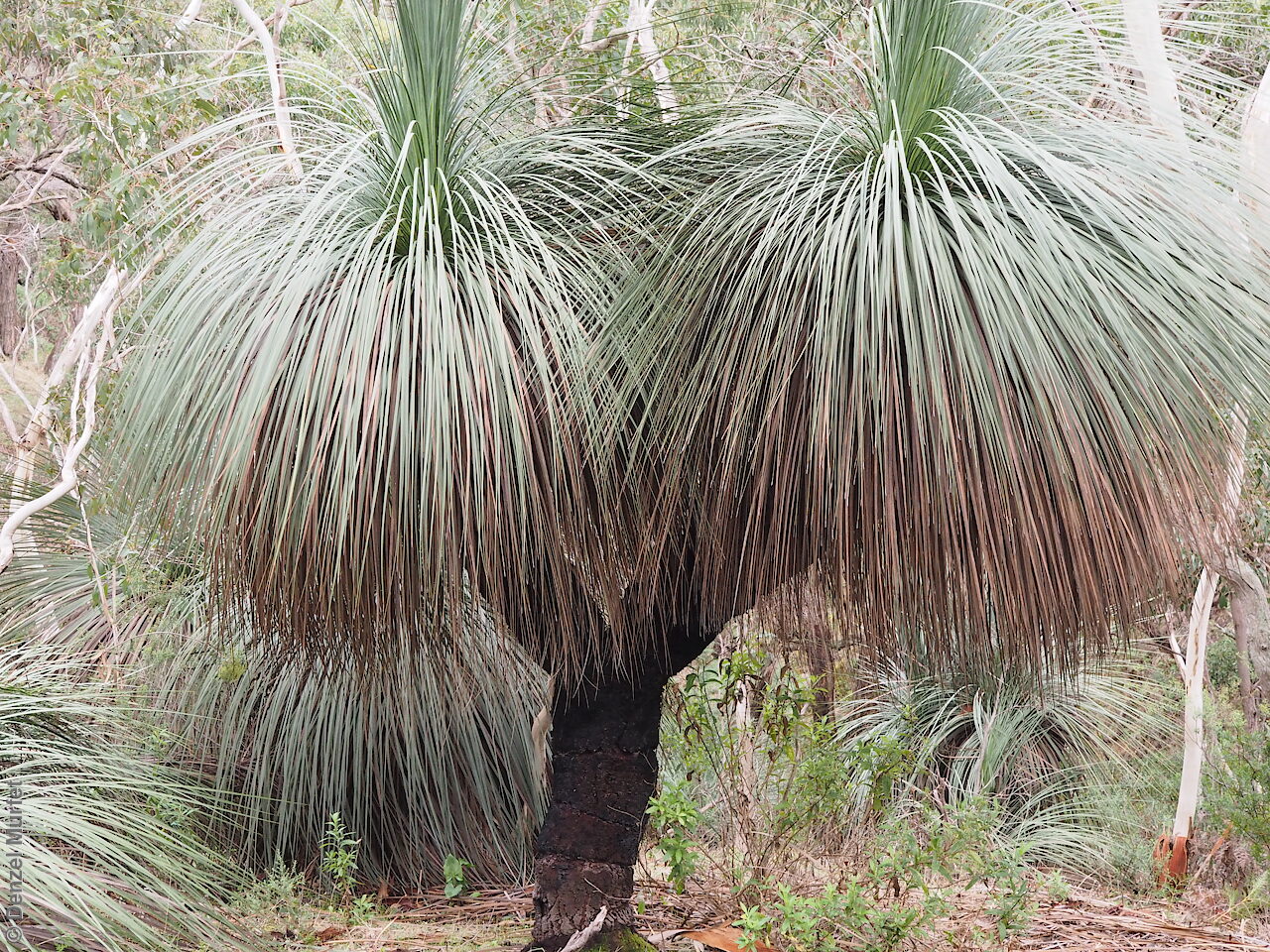
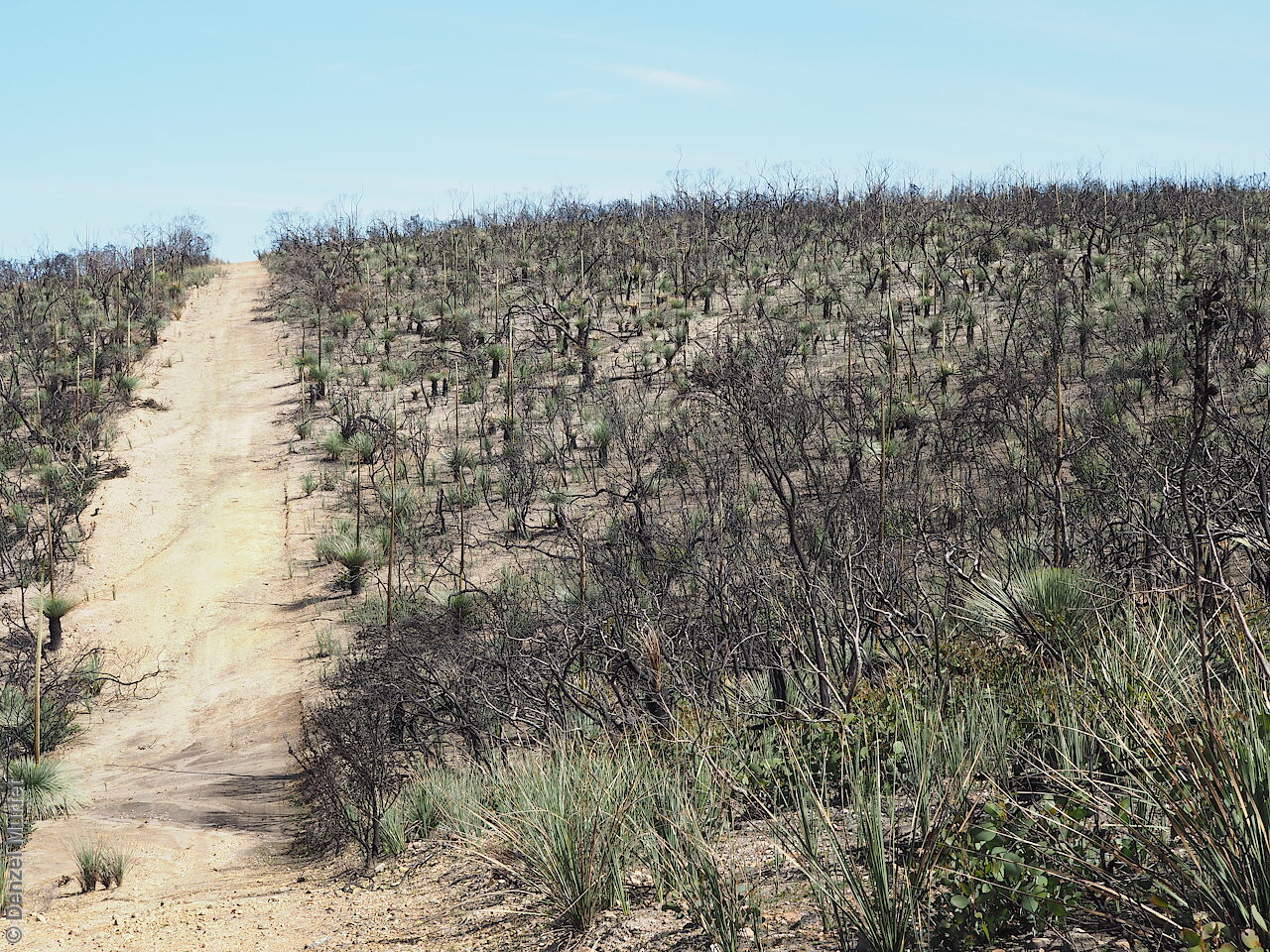
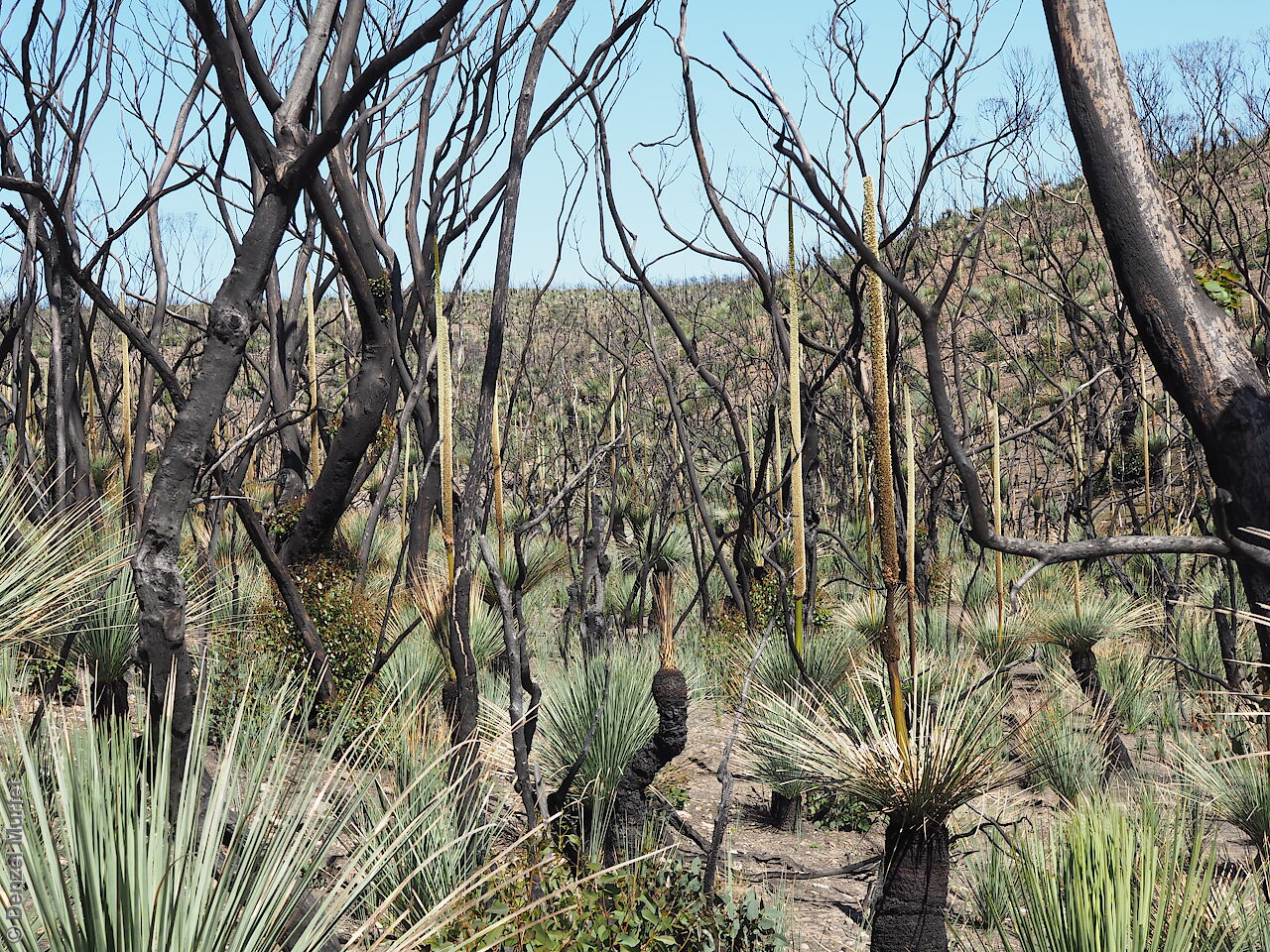
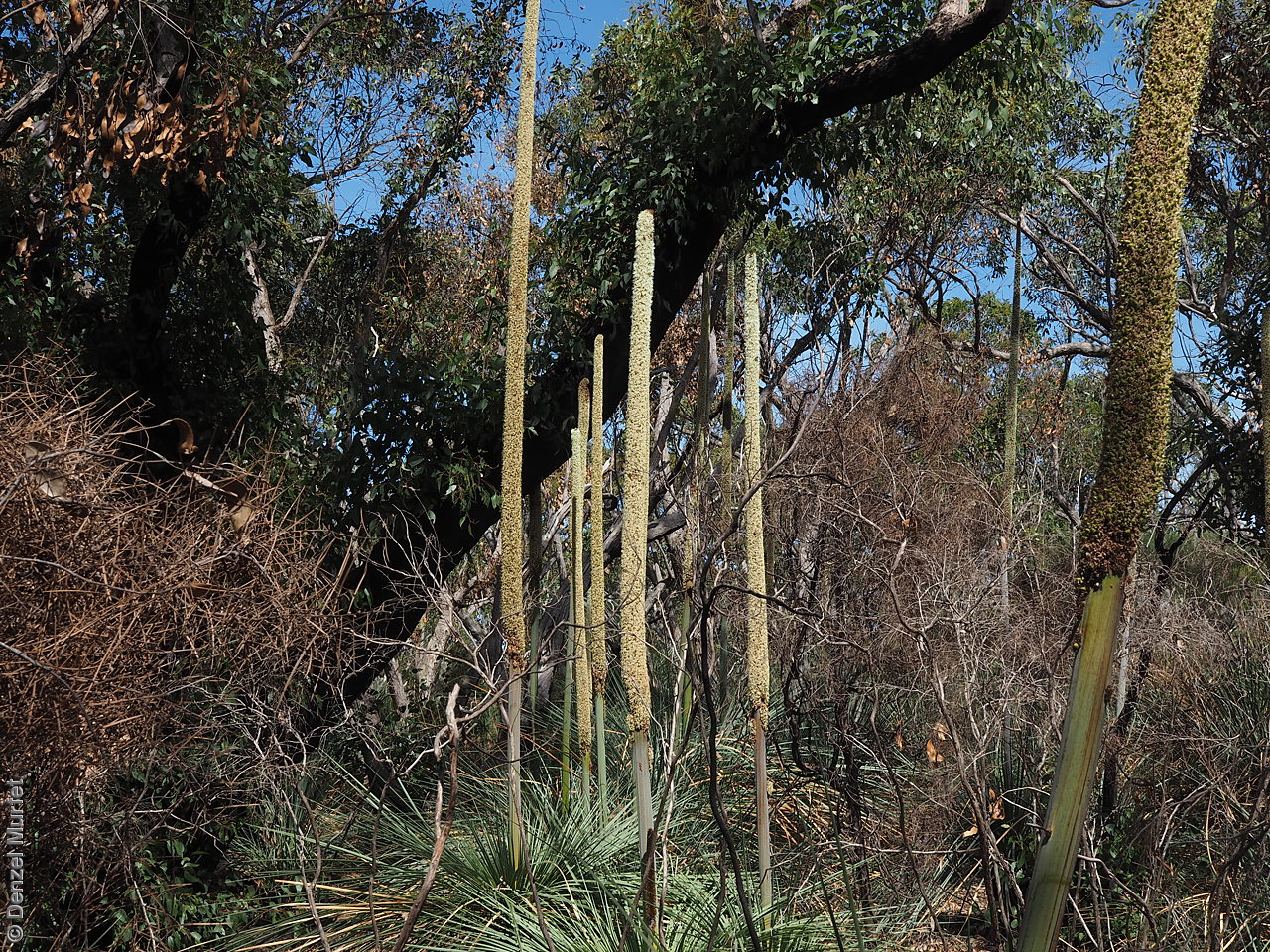
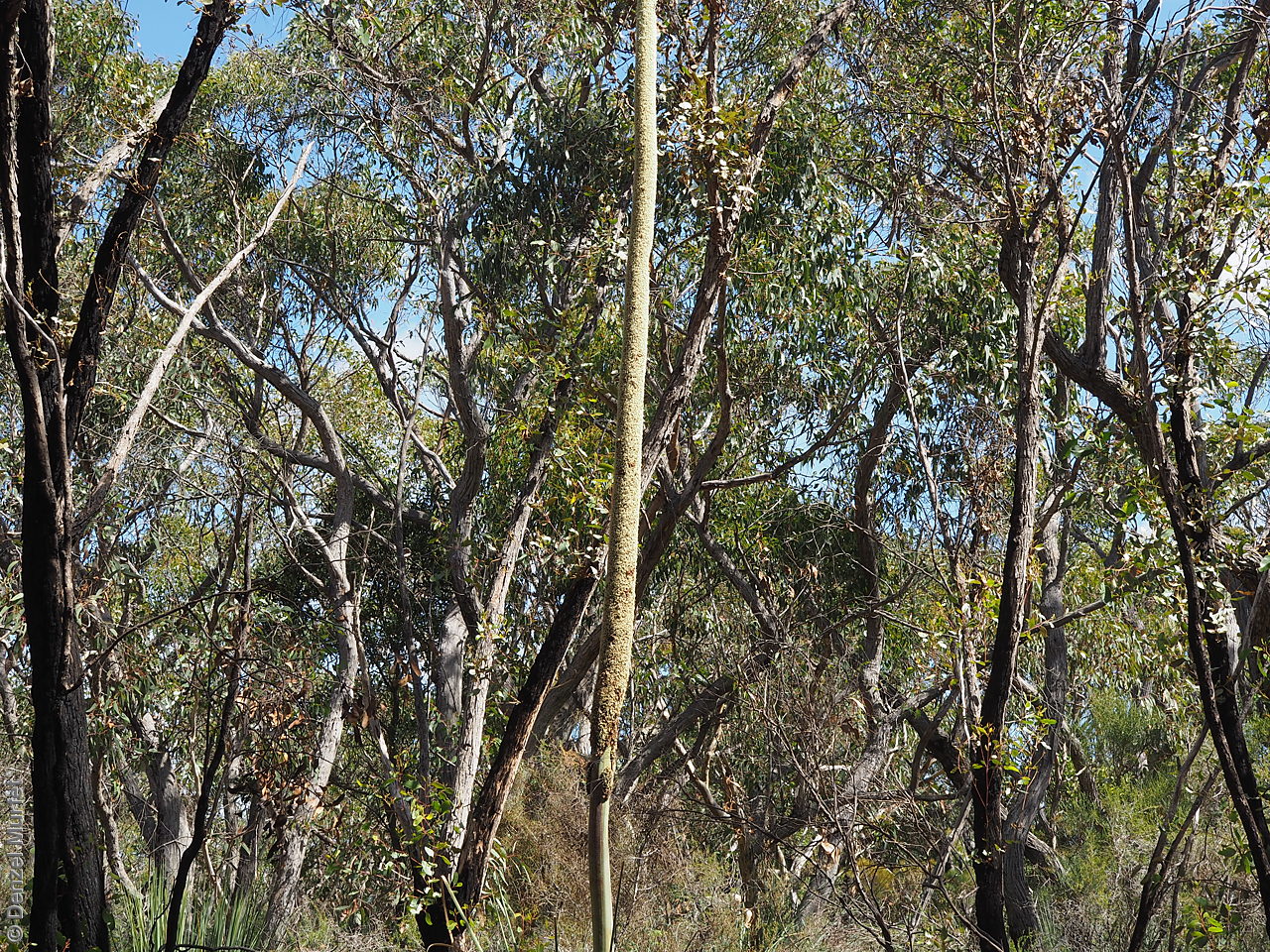
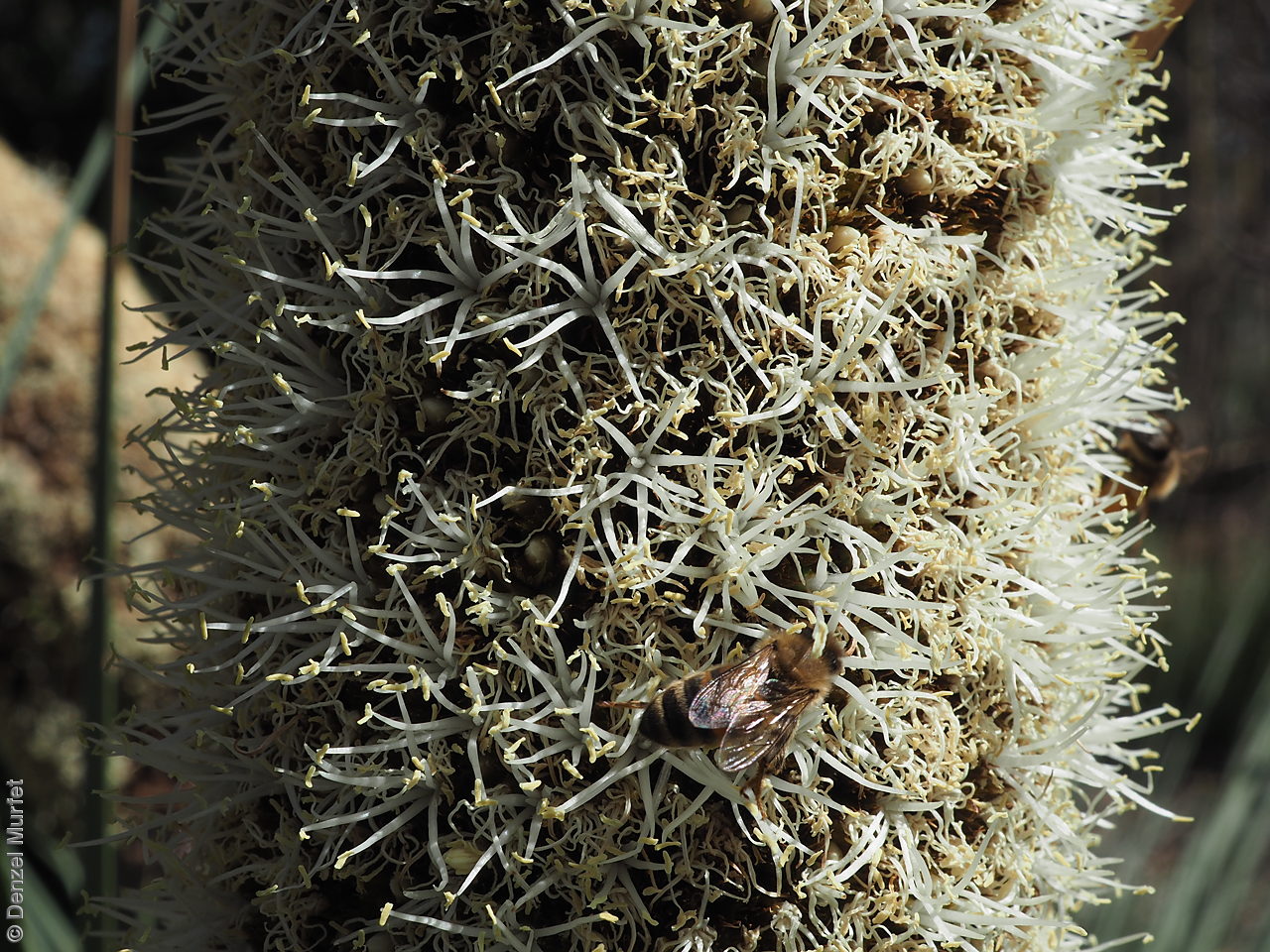
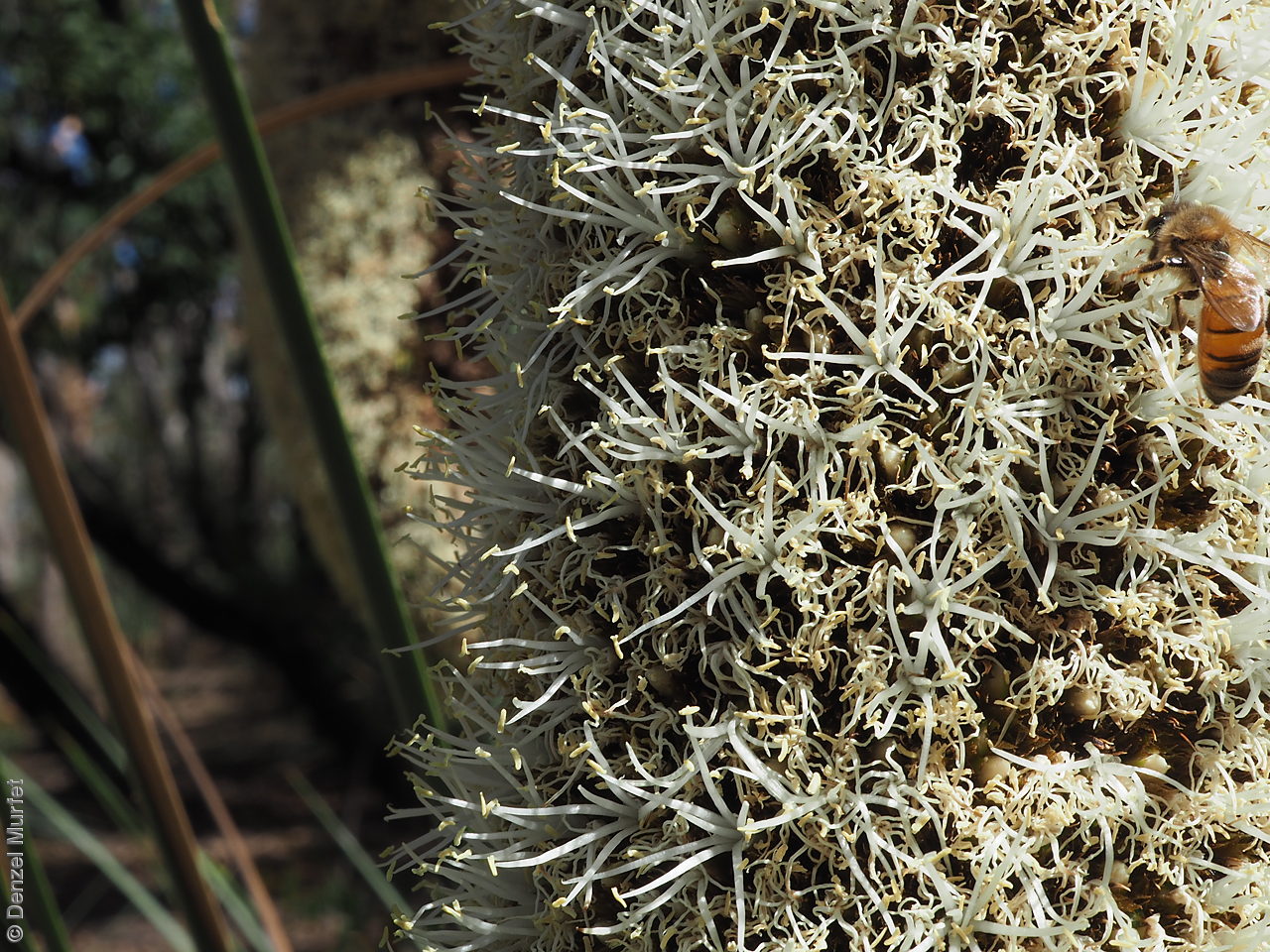
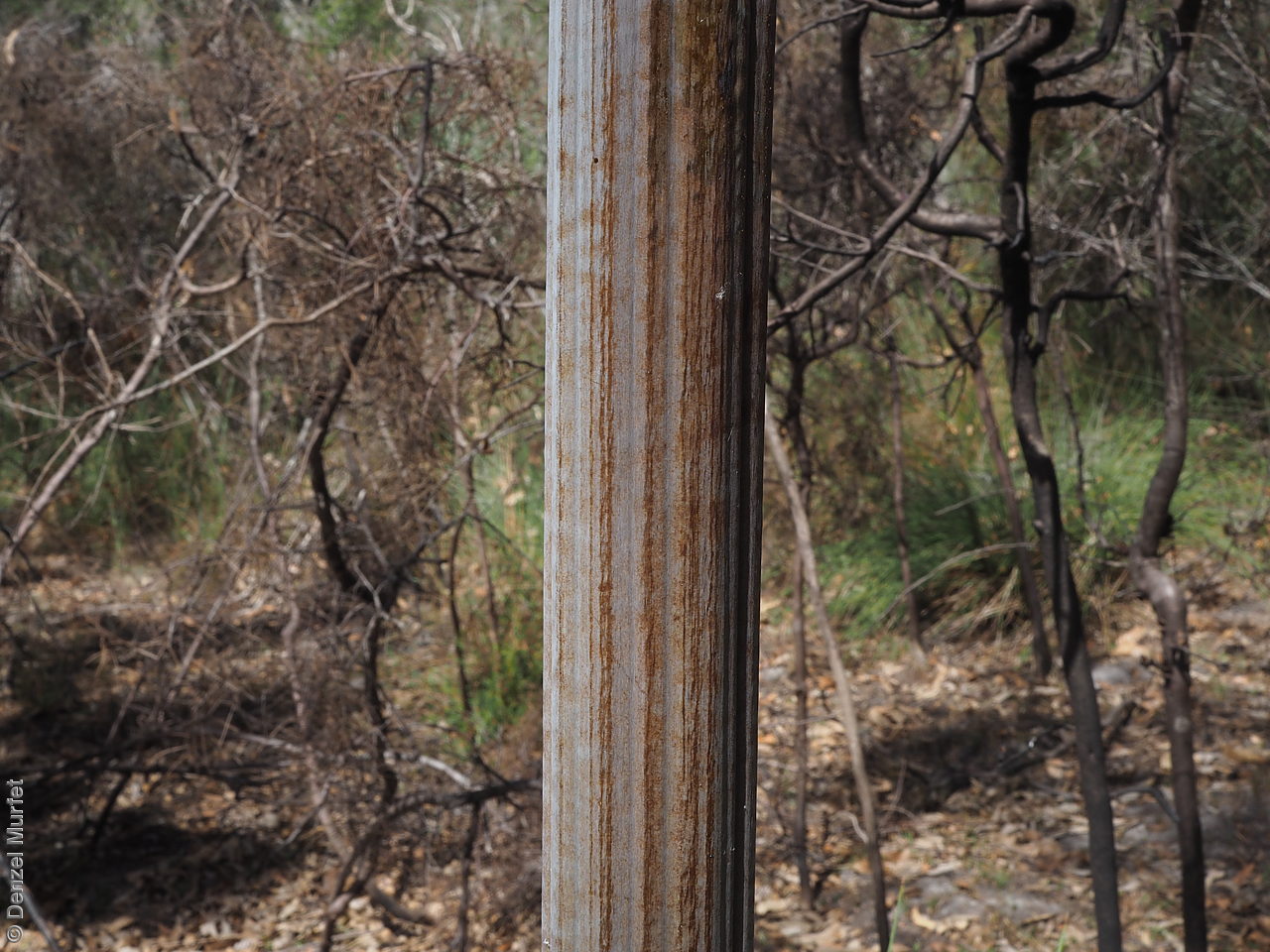
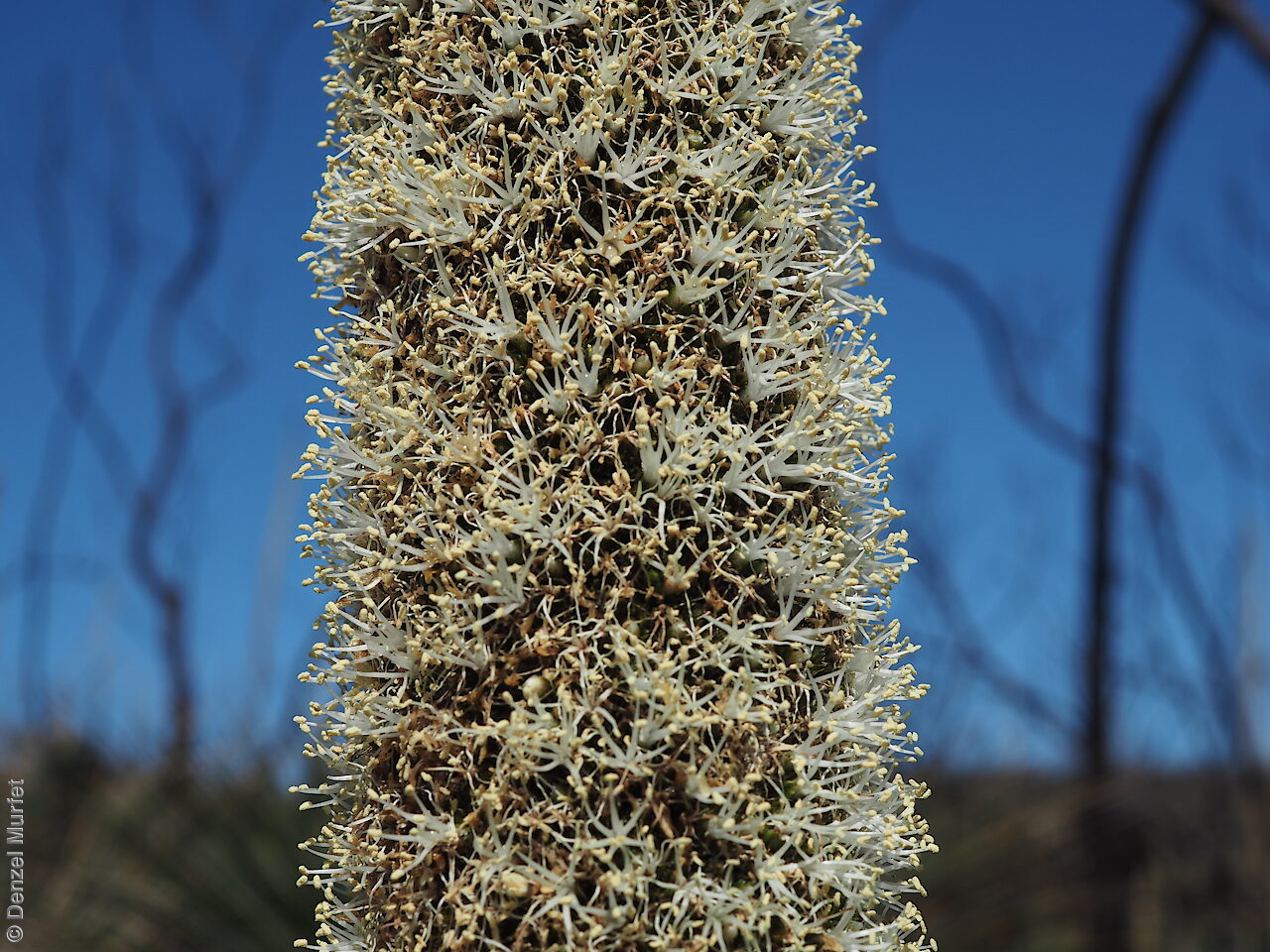
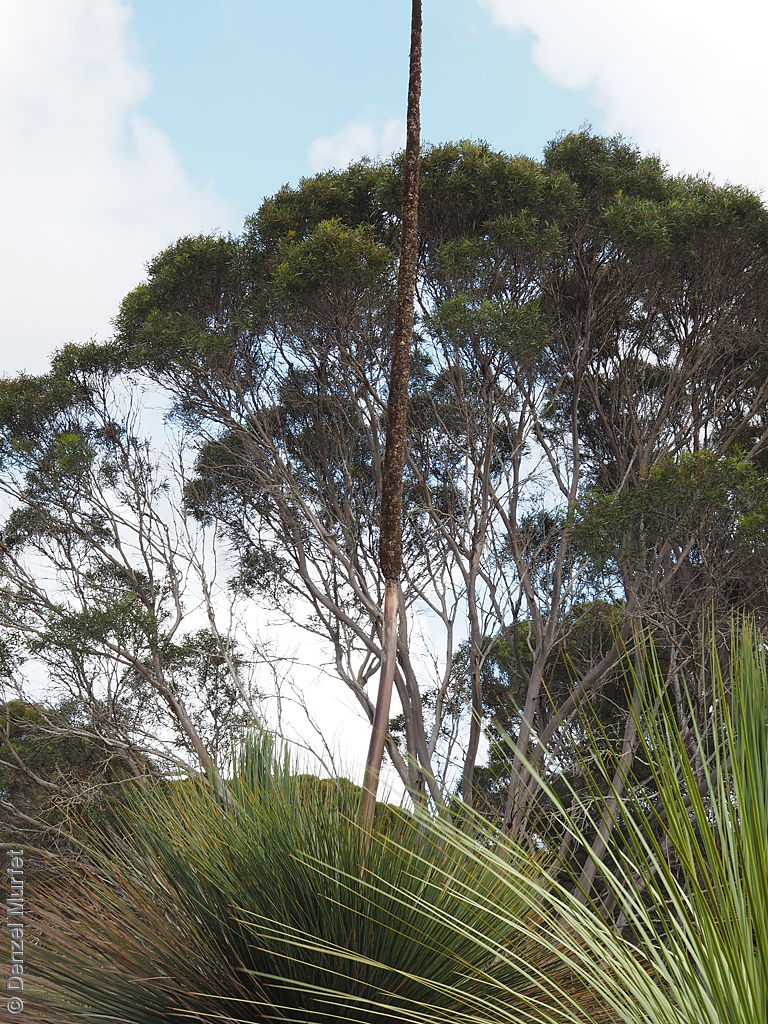
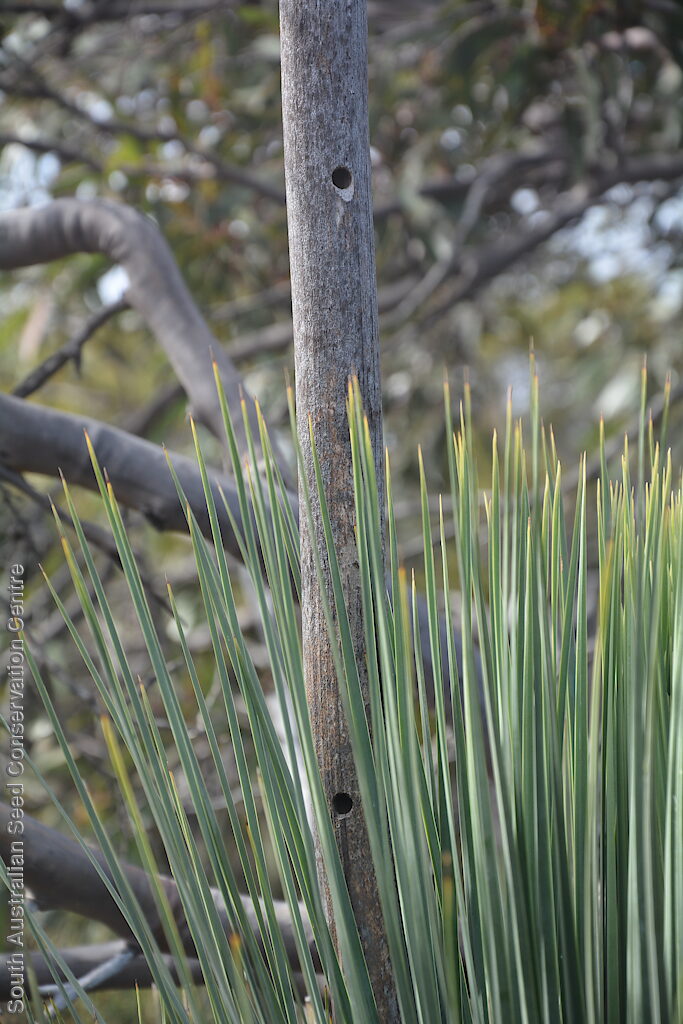
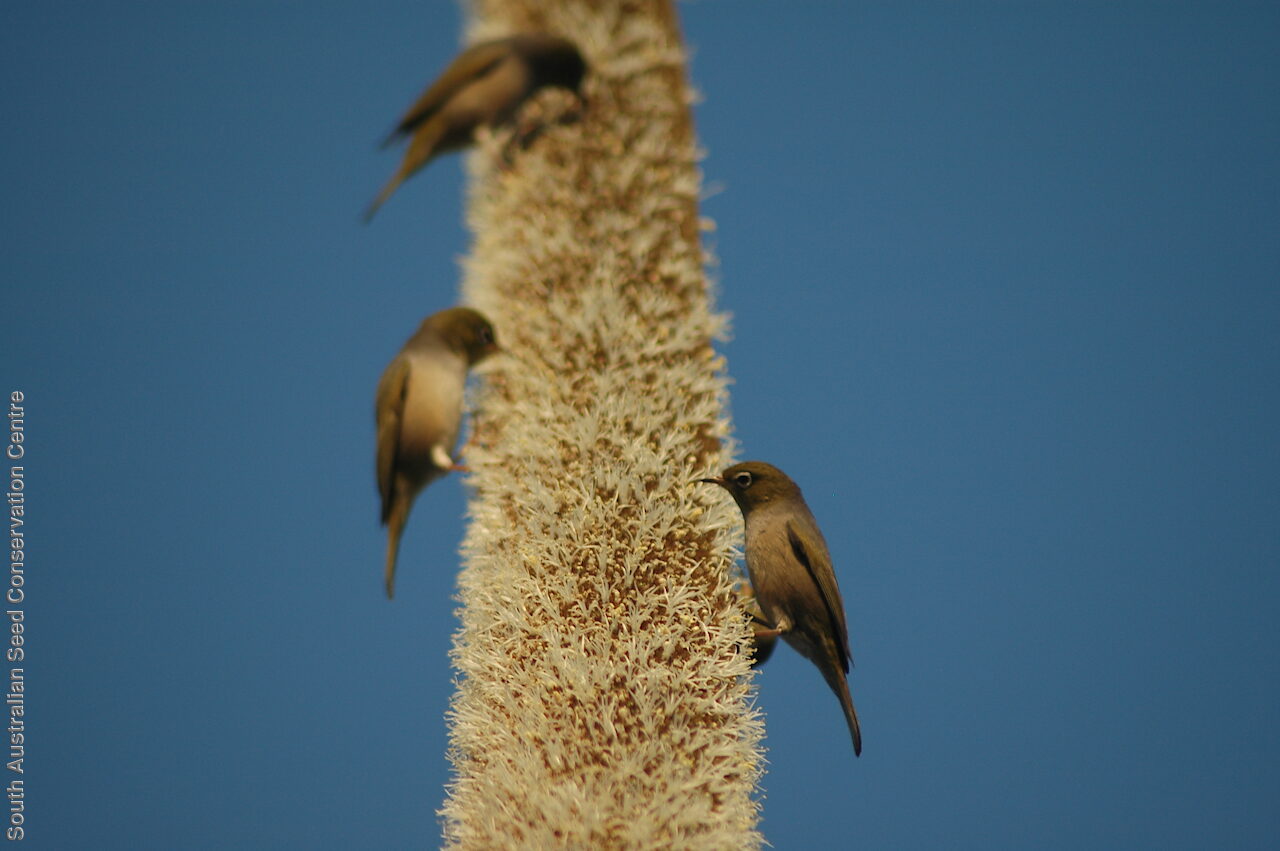
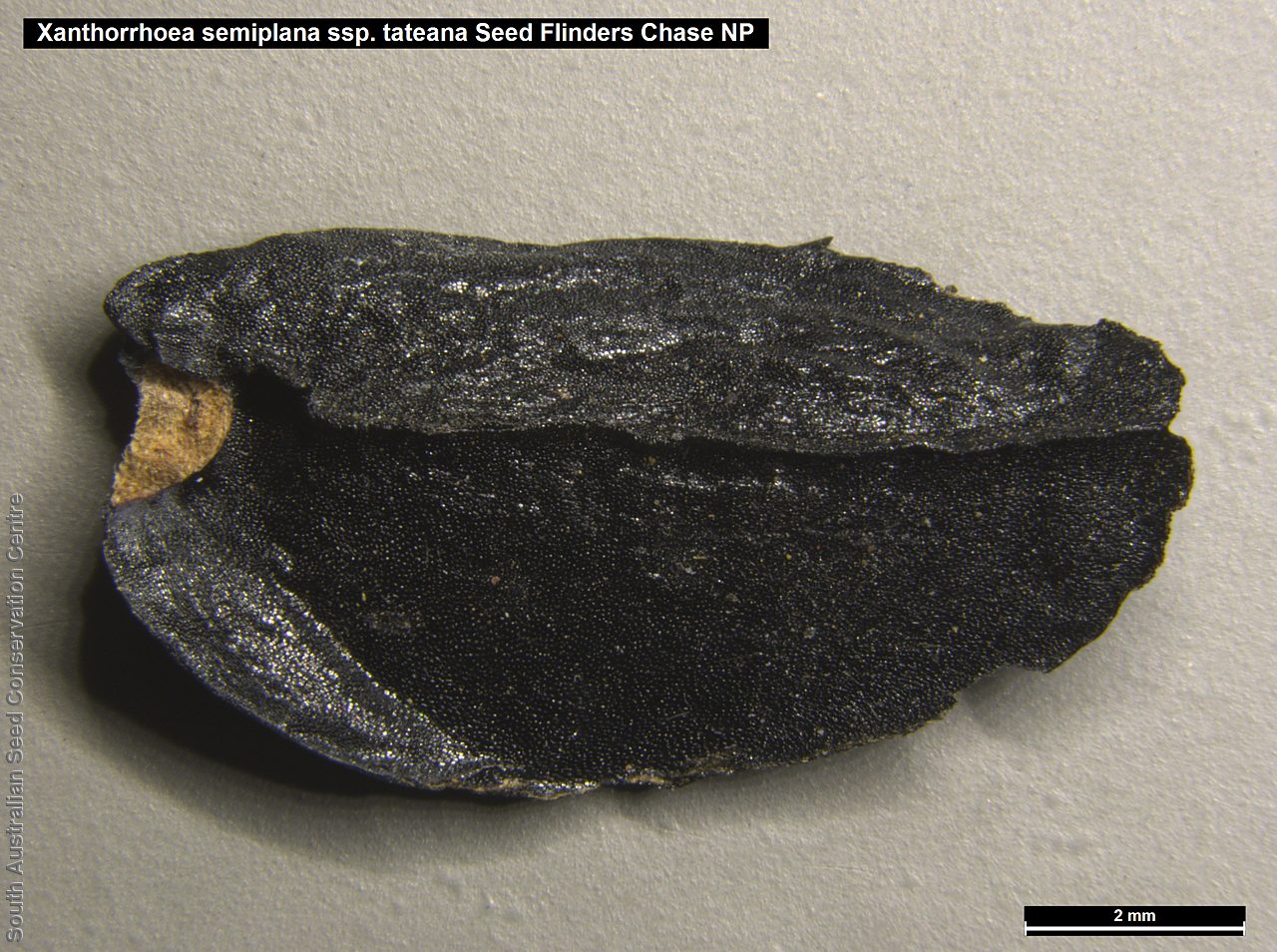
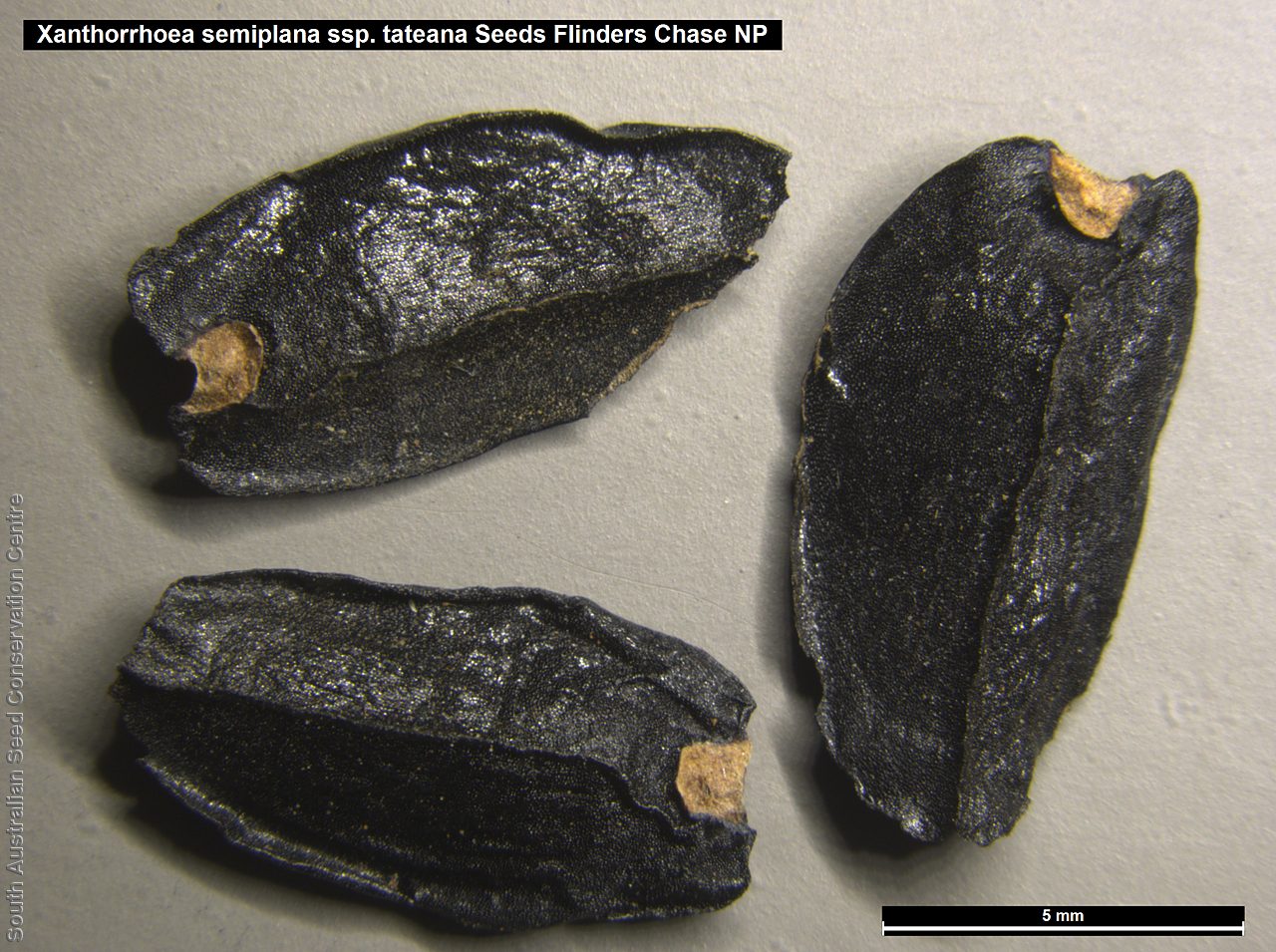

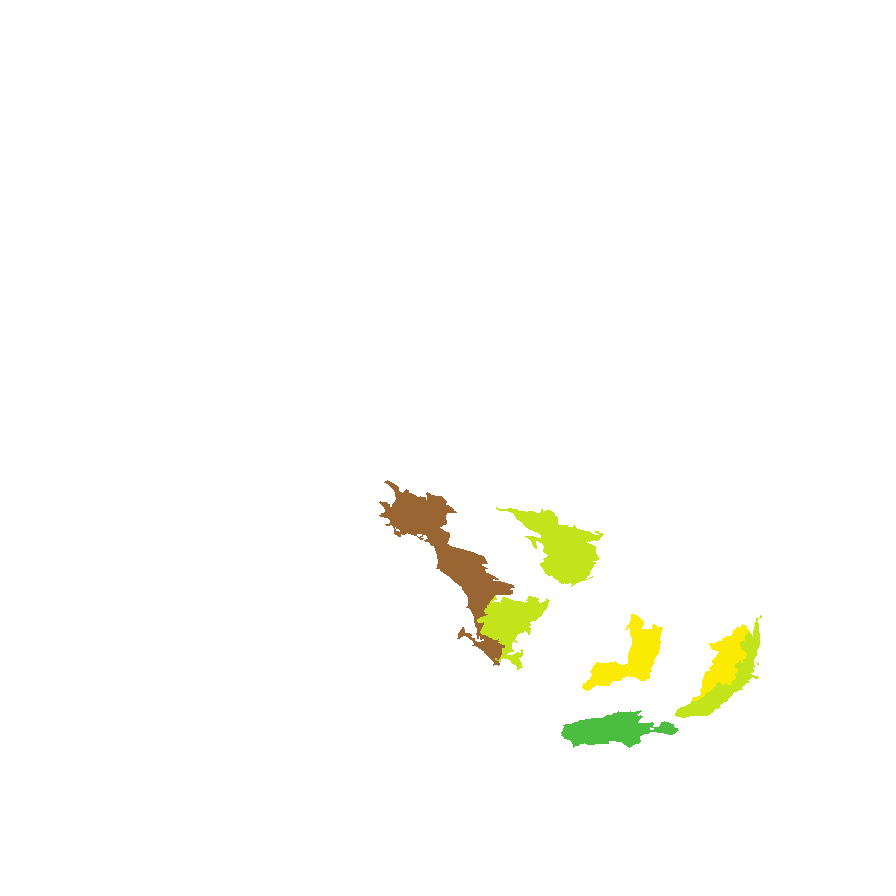
Botanical art
Prior names
Xanthorrhoea tateana
Common names
Tate's Grass-tree
Etymology
Xanthorrhoea from the Greek 'xanthos' meaning yellow and 'rheo' meaning to flow; referring to the yellow resin that is often produced from the leaves. Semiplana from the Latin 'semi' meaning half and the Greek 'planatus' meaning flat; referring to the leaves which can be flatted on one side. Tateana named after Ralph Tate (1840-1901), a geologist and the first Professor of Natural History at the University of Adelaide.
Distribution and status
Endemic to South Australia and found on the southern Eyre Peninsula, York Peninsula, Kangaroo Island and the southern Mount Lofty Ranges; growing on sandy soil. Native. Uncommon in South Australia.
Herbarium regions: Eyre Peninsula, Yorke Peninsula, Southern Lofty, Kangaroo Island
AVH map: SA distribution map (external link)
Plant description
Trunk usually more than 1 m tall with 1 to many crowns. Leaves transversely narrow-rhombic to very depressed-cuneate in section, to 12 mm wide and 3.5 mm thick, bluish-green, very glaucous. Inflorescence 180-360 cm long; scape 40-125 cm long, 25-60 mm diameter, spike 140-300 cm long, 25-90 mm diameter with numerous creamy flowers. Flowering between October and November. This subspecies defer from the other subspecies found in South Australia, Xanthorrhoea semiplana ssp. semiplana, which is trunkless and has a shorter and narrower flower spike (inflorescence 200-375 cm long, scape 75-200 cm long, 15-30 mm diameter, spike 65-250 cm long, 25-45 mm diameter. Fruits are numerous woody capsules maturing to dark brown along the spike. Capsule split into three segments, each containing one black seed. Seed embryo type is linear under-developed.
Seed collection and propagation
Collect seeds between January and April. Cut off fruit spikes that have mature capsules, usually turning dark brown or begining to split. The seeds inside should be black. Place the fruit spikes in a tray or bucket and leave to dry for 3-4 weeks or until most of the capsules split. Then shake the fruit spike in a bucket to dislodge the seeds. Store the seeds with a desiccant such as dried silica beads or dry rice, in an air tight container in a cool and dry place. Seeds are non-dormant, viable seed should germinate readily without any treatment.
| Location | No. of seeds (weight grams) | Number of plants | Date collected | Collection number Collection location | Date stored | % Viability | Storage temperature |
|---|---|---|---|---|---|---|---|
| MSB | 3,300 (55.26 g) | 24 | 25-Jan-2006 | DJD361 Southern Lofty | |||
| BGA MSB | 8,700 (177.08 g) 5,000 (102.5 g) | 24 | 25-Jan-2006 | DJD361 Southern Lofty | 10-Aug-2006 | 100% | -18°C |
Number of plants: This is the number of plants from which the seeds were collected.
Collection location: The Herbarium of South Australia's region name.
% Viability: Percentage of filled healthy seeds determined by a cut test or x-ray.